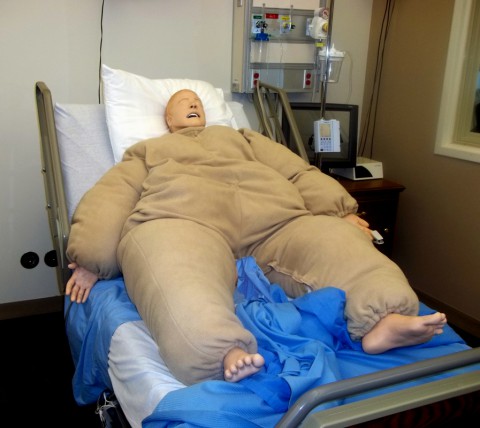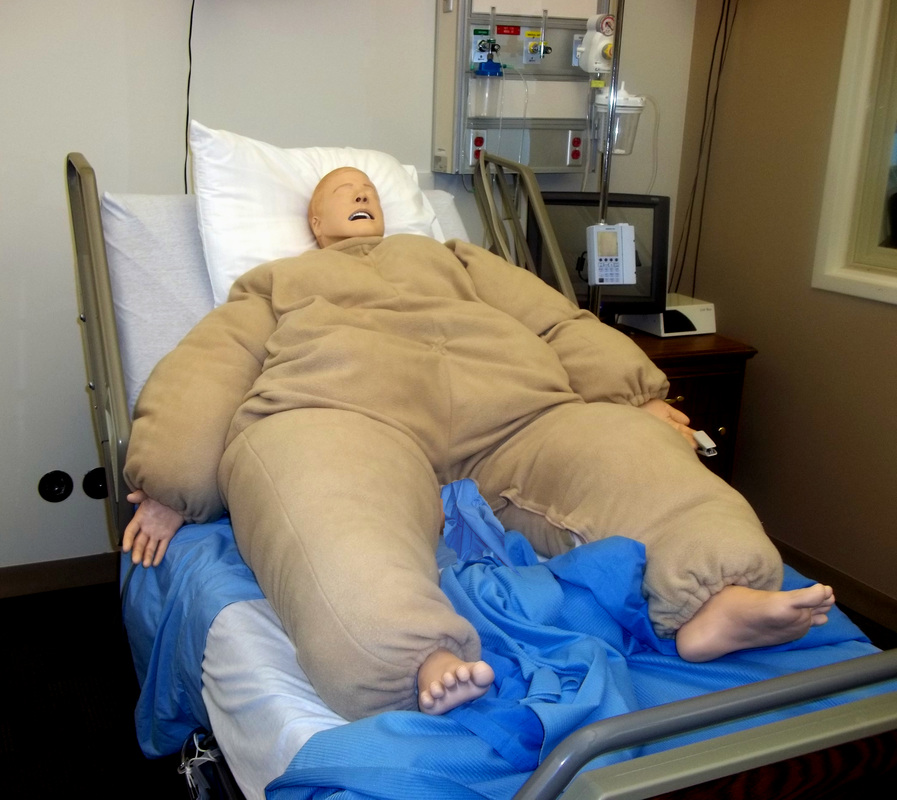
Employees at two hospitals have been donning a specialized suit as a learning tool in how to treat obese patients safely and with respect.
The goal is to reduce injuries to patients and healthcare providers by illustrating the limitations faced by severely overweight patients, according to Peterborough and Stamford Hospitals in England. The bariatric suit, which was donated by a hospital support organization, weighs about 13 pounds.
“By using this suit, staff will encounter real life situations that could be present when caring for a patient” who weighs more than 400 pounds, the hospitals said in a November 2013 statement. Hospital workers are also being trained in the proper use of equipment such as hoists.
Julie Tebb, who is part of the Peterborough hospital’s moving and handling team, said wearing the suit made it uncomfortable to lie on her back.
“It restricts my airways, and I find it difficult to breath,” she told BBC News.
In the United States, more than one-third of adults and almost 17% percent of children ages 2 to 19 are considered obese, according to the Centers for Disease Control and Prevention (CDC). That equates to about 41 million women and 37 million men who are obese, which is defined as having a body mass index of 30 or higher. Among youngsters, 5 million girls and 7 million boys are obese.
The CDC notes that obese individuals are at greater risk of developing heart disease, cancer, high blood pressure, stroke and diabetes, among other conditions. In 2008, obesity-related healthcare costs totaled an estimated $147 billion.
Numerous public health programs have been created to combat the obesity epidemic, including the National Heart, Lung and Blood Institute’s Obesity Education Initiative, which includes efforts to boost healthy nutrition and physical activity among children. Similarly, Let’s Move! –an initiative spearheaded by First Lady Michelle Obama – seeks to shrink the nation’s childhood obesity rate to 5% by 2030.
The United Kingdom also has seen rising obesity rates in recent decades. From 1993 to 2011, the percentage of obese men almost doubled, from 13% to 24%, while the rate among women jumped from 16% to 26%, according to data from the nation’s Health and Social Care Information Centre.
Nearly 11,800 patients were admitted to hospitals in England with a main diagnosis of obesity in 2011-12, about triple the number admitted in 2006-07, the national center reported.









